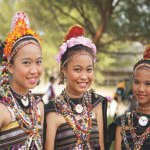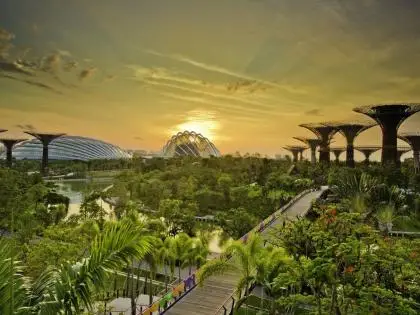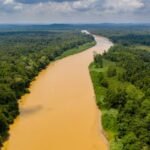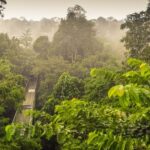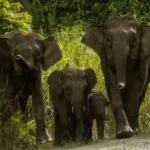Bhutan off the Beaten Path
9 Days / 8 Nights
Highlights
- Serene valleys and vibrant towns
- Hike to the sacred Taktsang Monastery (Tiger’s Nest)
- Trek the “Trail of the Haa Planters” with spectacular Himalayan views
- Discover Bhutan’s spiritual and architectural marvels
- Traditional village life and Buddhist monastic culture
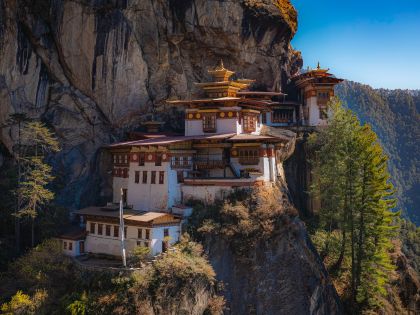
Full Itinerary
Day 1: Arrival in Paro
Upon arrival at Paro International Airport, one of the most scenic airports in the world, you will be greeted by your Bhutanese guide. After clearing customs and immigration, enjoy a short drive to your hotel in Paro. Nestled in a picturesque valley surrounded by snow-capped peaks, Paro is a charming town rich in culture and history. It is home to many of Bhutan’s most iconic sites, including the cliffside Taktsang Monastery (Tiger’s Nest), ancient dzongs, and traditional Bhutanese architecture. The rest of the day is free to relax and acclimate or explore the town at your leisure.
Day 2: Full-day Sightseeing in Paro
Our sightseeing tour of Paro begins with a visit to the impressive Paro Dzong, Bhutan’s most iconic fortress, which majestically overlooks the valley. Before that, we explore Ta Dzong, originally built as a watchtower to defend the Paro Valley. In 1967, it was transformed into the National Museum and now houses a remarkable collection of antique thangka paintings, traditional textiles, ancient armour, weaponry, and rare specimens of Bhutan’s unique flora and fauna. Along the way, we’ll also come across local shops offering handicrafts made from wood, cloth, and metal. You may spot Bhutanese archers practising at willow-lined archery ranges—an everyday sight, as archery is the national sport. Traditional cantilever bridges also dot the landscape, offering a glimpse into Bhutan’s rich architectural heritage.
Day 3: Paro Valley, Taktsang Monastery
Today promises another insightful and inspiring experience in this extraordinary kingdom. The Paro Valley, with its breathtaking beauty, is also a hub for various agricultural ventures. You’ll find commercial cultivation of shiitake mushrooms, strawberries, asparagus, and other grains and vegetables. The landscape is a vibrant mosaic of colour, dotted with traditional Bhutanese farmhouses adorned with ornate woodwork. Forested hills frame the valley, and glimpses of distant mountains add to the charm. Even a simple drive along the willow-lined roads is soothing, with no traffic congestion, no crowds, and absolutely no litter—plastic bags are banned throughout Bhutan.
This morning, we set out to explore one of Bhutan’s most iconic landmarks: the Tiger’s Nest Monastery, locally known as Taktsang. A short drive brings us to the trailhead, and from there, we begin a rewarding 1.5-hour uphill hike through chir pine forests to a teahouse viewpoint. After a short rest, we continue for another 30 minutes to reach a stunning vantage point directly across from the cliffside monastery. Taktsang is a sacred site believed to be where Guru Rinpoche meditated in the 8th century. We’ll either enjoy a picnic lunch en route or return to the hotel for lunch. The afternoon is free for you to relax or explore at your own pace.
Day 4: Drive to Haa Valley and begin trekking to Yatong
Today, we begin our trek toward Khadey Gom (3,235 meters), passing through Yatong Gompa and the traditional village of Talung. The trail winds through scenic farmlands bordered by dry stone walls, built to shield crops from deer and wild boars. Enjoy the serene landscapes and cultural charm along the way. Overnight at a scenic campsite.
Day 5: To Saga La
We trek to Dongney Tsho (lake) at 3200 meters via Saga La. The journey begins with a gentle one-hour hike through meadows and coniferous forests, followed by a ninety-minute ascent to Saga La Pass. On a clear day, the views from the pass are breathtaking — looking towards Paro, you can see the sacred Mount Chomolhari, Drukgyel Dzong, and the iconic Taktsang Monastery nestled in the valley below. To the west, the snow-capped peaks of Haa and the Tibetan border come into view. From the pass, the trail descends for two hours through a mixed forest of rhododendrons and conifers. We camp in an open meadow surrounded by tall fir trees at Dongney Tsho, with the sacred Choshola mountain towering to our left. Overnight camp.
Day 6: Trek to Drukyel Dzong and drive to Thimphu
Today’s hike begins with a steep descent through dense vegetation until we reach Genchu Zam. Along the way, you may spot laughing thrushes, nutcrackers, magpies, and pheasants. We’ll pass a charming small hamlet of eight houses and a quaint temple situated on the left side of the trail. Next is Chodeypu village, located at the base of Laump Bjara, a misty mountain home to mountain goats. From there, we’ll continue to Balakha Chhu, the endpoint of the ancient Trail of the Haa Planters. At Balakha Chhu, we’ll meet our transport and head to Thimphu.
In the afternoon, we visit the main Secretariat building. The Tashichho Dzong is a vital landmark, housing the central Secretariat, National Assembly Hall, King’s Office, and Throne Room. This remarkable structure is built entirely without nails or metal, showcasing traditional Bhutanese craftsmanship. Nearby stands a large stupa honoring the late King H.M. Jigme Dorji Wangchuk, widely regarded as the founder of modern Bhutan.
Day 7: Sightseeing of Thimphu and Wangueprodang
Begin your day with a visit to Bindabasini Temple, one of the oldest and most revered Hindu temples in Pokhara. Dedicated to Goddess Durga, a fierce manifestation of Bhagwati, the temple holds deep religious significance for local devotees. Located near Pokhara’s Old Bazaar, this white pagoda-style temple is a spiritual hub where locals gather daily for worship, often offering animal sacrifices as part of traditional rituals. Visitors may also have the chance to witness a Hindu wedding ceremony taking place within the temple grounds. Return to the hotel for breakfast.
Later, set out on a half-day sightseeing tour to the World Peace Pagoda, a serene Buddhist stupa built as a symbol of global harmony. Constructed under the guidance of Nichidatsu Fujii, a Japanese monk and follower of Mahatma Gandhi, the Peace Pagoda stands high on a ridge above Phewa Lake, offering breathtaking panoramic views of the Annapurna mountain range and the shimmering lake below. Accessible by trail or boat, the pagoda is a peaceful place for reflection, welcoming visitors of all backgrounds and beliefs. After taking in the views, hike down to Lakeside (approx. 4 km / 1.5 hours), descending through scenic trails.
Then enjoy a boat ride across Phewa Lake, including a stop at the Barahi Temple, a two-storied pagoda-style temple located on an island in the lake. Phewa Lake is the heart of Pokhara—tranquil, vast, and surrounded by natural beauty. It’s the largest and most scenic of Pokhara’s lakes, perfect for a relaxing one-hour boat ride. Afterwards, you can explore the nearby Lakeside Market, a lively area filled with shops, cafés, and souvenirs. In the afternoon, enjoy free time for personal activities or relaxation. Return to the hotel after dinner. Overnight at your hotel in Pokhara.
Day 8: Vicit the ancient Punakha & Punakha Dzong, return to Paro
Today, we visit the impressive Punakha Dzong, the former capital of Bhutan. This historic fortress, built in 1637 between two rivers, has withstood multiple fires and glacial floods over the centuries. Every February, the Punakha Serda procession takes place here, celebrating the victory over the Tibetans. After the visit, we take a scenic 45-minute drive to Wangduephodrang, where you can admire the Dzong and explore the local market. In the afternoon, we drive to Paro for an overnight stay at the Kichu Resort.
Day 9: Trip concludes Paro
Your guide will accompany you to the airport to assist with your international flight.
Pricing
Estimated Prices
| min 4 persons | USD per Person |
|---|---|
| Per Person | USD $2250 |
| Private Tour | USD $2850 |
